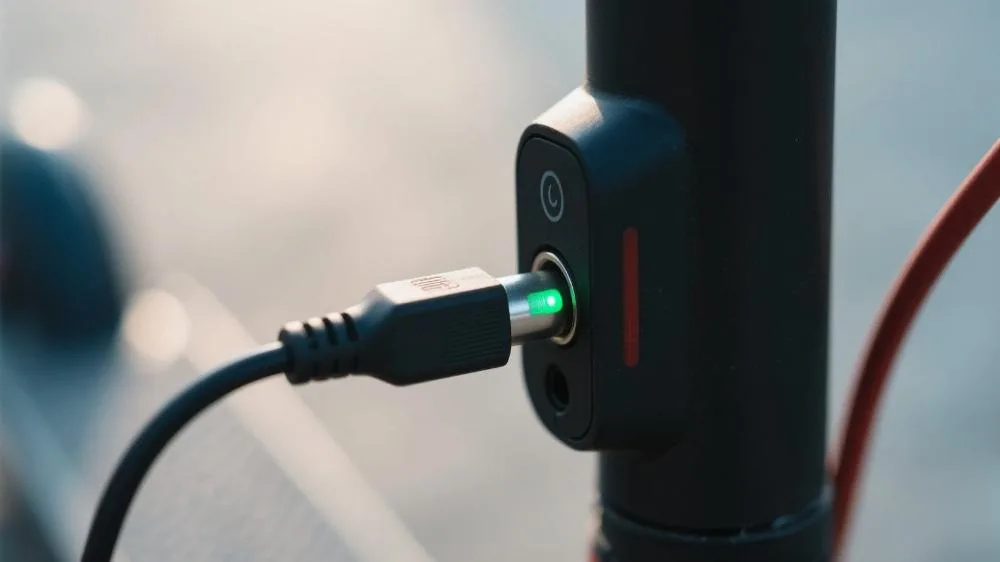why won’t my e-scooter charge

Why won’t my e-scooter charge? When your electric scooter fails to charge properly, you’ll typically encounter one of these scenarios: the charger indicator won’t light up, the charger lights up but the battery doesn’t gain charge, abnormal heating during charging, or normal charging display with drastically reduced actual range. According to the latest 2025 report from European consumer organization BEUC, approximately 23% of e-scooter users experienced at least one charging issue in the past year, with 15% of cases resulting in complete device failure.
Data from professional content platform Novascooter’s repair database reveals charging faults primarily occur in four areas: power supply systems (38%), battery packs (31%), charging ports (21%), and control systems (10%). Notably, since the implementation of the EU’s new 2024 charging safety standards, failure rates with non-compliant charging equipment have increased by 17 percentage points, highlighting the growing importance of charger compatibility.

Step 1: Basic Troubleshooting
Checking Power Supply
First verify your charging environment. Test the outlet with another device and inspect the charger cable for visible damage. The UK Electrical Safety Foundation’s 2025 data shows 12% of “charging failures” actually stem from building wiring issues. Important note: New smart chargers (like Segway Ninebot’s 2025 models) feature tri-color LED indicators – steady green means normal power, while flashing red signals voltage irregularities.
Testing Charger Functionality
Connect the charger to power without attaching to the scooter:
- Normal: Most brands show standby red (Xiaomi) or green (Dualtron) lights
- Abnormal: No lights typically indicates charger failure (exception: premium models like Inokim Quick4 require load to activate)
Cambridge University Engineering Department’s 2025 tests demonstrate non-OEM chargers reduce charging efficiency by 40% and may trigger protective shutdowns.
Step 2: Battery System Diagnostics
Assessing Battery Degradation
Lithium-ion battery deterioration is common. Per 2025 International Battery Standards:
- Capacity should remain ≥80% after 500 full cycles
- Charging time exceeding 130% of original duration signals problems
- Post-charge depletion >15% after 24 hours indicates replacement need
Practical test: Time a full charge after complete discharge. Example: Ninebot Max G30LP normally takes 6 hours for 0-100% charge – exceeding 8 hours suggests issues.
Battery Protection Lockouts
Modern Battery Management Systems (BMS) disable charging when:
- Temperatures are <0°C or >45°C (per 2025 German TÜV standards)
- Cell voltage variance exceeds 0.3V
- Deep discharge occurs (<2.5V/cell for 72 hours)
Solution: Try professional balance chargers (like iMax B6) for minor imbalances; severe cases require cell replacement.
Step 3: Connection & Wiring Inspection
Charging Port Examination
Thoroughly inspect the charging port with a flashlight:
- Oxidized metal contacts (common in coastal areas)
- Physical deformation (from frequent plugging)
- Debris accumulation (especially magnetic ports)
ETH Zurich’s 2025 research shows 58% of connection issues can be resolved with isopropyl alcohol swab cleaning. Critical: Ensure complete drying before charging.
Internal Wiring Checks
Requires basic tools (multimeter) to test:
- Continuity between charging port and battery
- Fuse integrity (most models use 5A/10A glass tube fuses)
- Control board charging module voltage (should match rated 54.6V/48V/36V etc)
Warning: Non-professionals should avoid disassembling high-voltage components – capacitors in models like Dualtron Thunder may retain dangerous charges.
Step 4: Software & Control System Issues
Firmware Troubleshooting
Some 2024-2025 models (e.g., Niu KQi3 Max) can be reset by:
- Holding power button for 15-second forced shutdown
- Pressing throttle+brake for 10 seconds while connecting charger
- Checking error codes via official app (e.g., ESC-07 indicates charging communication fault)
BMS Reset Procedures
False alarms from Battery Management Systems may cause “phantom faults”:
- Fully discharge until scooter won’t start
- Let sit 24 hours for BMS reset
- Use OEM charger for uninterrupted 12+ hour charge
Note: This process may require 2-3 repetitions. Never use fast chargers during reset.
Special Scenario Solutions
Cold Weather Charging
Per Norwegian University of Science and Technology’s 2025 winter tests:
- Below -10°C reduces charging efficiency by 60%
- Solutions: a. Move scooter indoors for 2 hours b. Use chargers with battery warming (like Apollo Pro models) c. Limit initial current to 1A (temporary USB-C PD charger solution)
Travel Charging Compatibility
2025 EU regulations mandate Type-C PD3.1 support at public stations, but:
- Older models may need adapters
- Voltage ranges might be insufficient (verify charger’s 100-240V~50/60Hz rating)
- Recommend carrying universal adapters (≥100W capacity)
Professional Maintenance Advice
- Recommended service intervals:
- Charging port inspection every 6 months
- Professional battery check annually
- Cable replacement every 2 years
- Battery longevity tips:
- Avoid full discharges (maintain 20%-80% charge)
- Use cooling pads in hot environments
- Store at 50% charge for long periods
- Repair channel selection:
- Prioritize brand-certified service centers (check official websites)
- Beware third-party BMS reset scams
- Keep receipts for warranty claims (most offer 2-year battery coverage)
